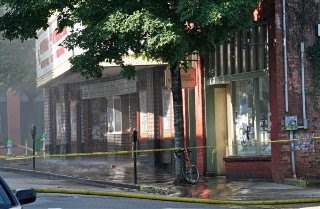
We’re thrilled to start sharing with you “Updates from Ronnie” (Ronnie Green, Superintendent, Holder Construction). We are documenting GMOA’s expansion, and while it’s still early in the process, big changes are rapidly happening.
On our Flickr account you will find the collection "GMOA Expansion" with week-by-week folders for you to follow at your own leisure.
Yesterday, Ronnie briefly informed us about the progress of these first three weeks. If you look closely at Week 3’s pictures, you can see the stakes extending out from the building. These stakes outline where the new expansion, which will hold our permanent collection, will stand. You’ll be able to walk up the existing indoor stairs that will lead you into the beautiful, new expansion or the existing galleries, which will continue to show temporary exhibitions. Underneath the extension will be parking for docents and volunteers, as well as handicapped parking.
In Week 3’s pictures the bulldozer is scooping out what will be the sculpture garden. This area will serve as a serene spot to view sculpture from GMOA’s permanent collection, relax, eat lunch or just enjoy the museum’s presence.
Although we can dream of relaxing in our sculpture garden, for now it’s only bulldozers and hard hats – check back next week for more updates from Ronnie!


















































